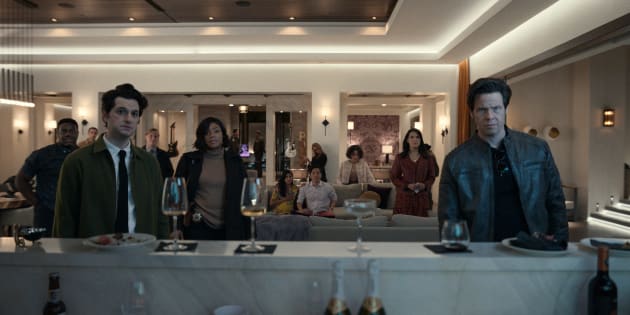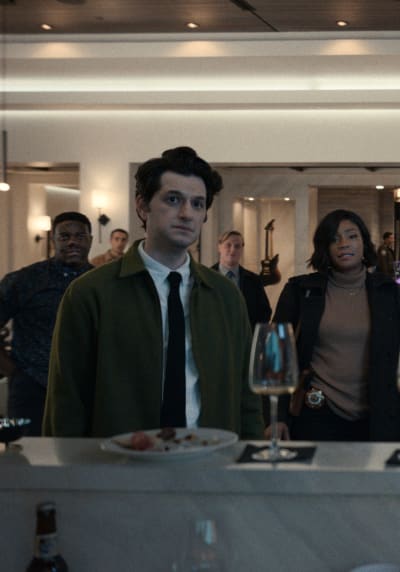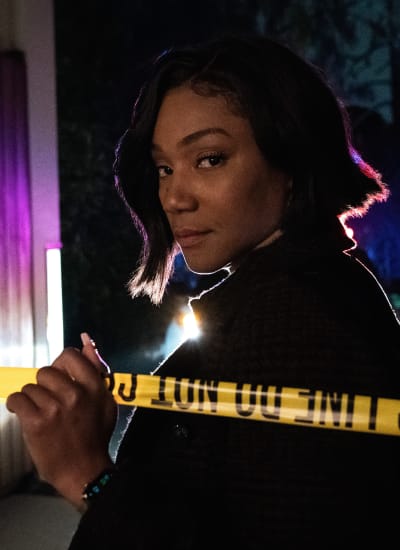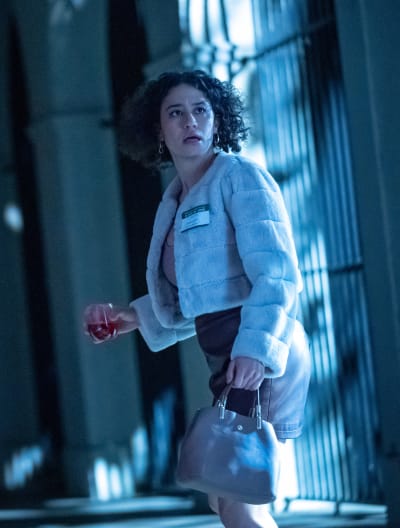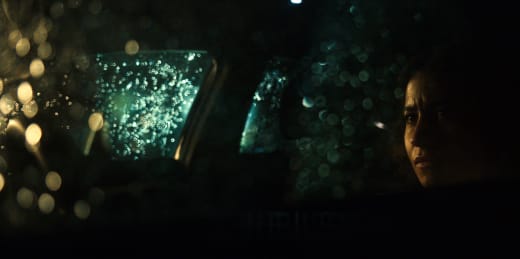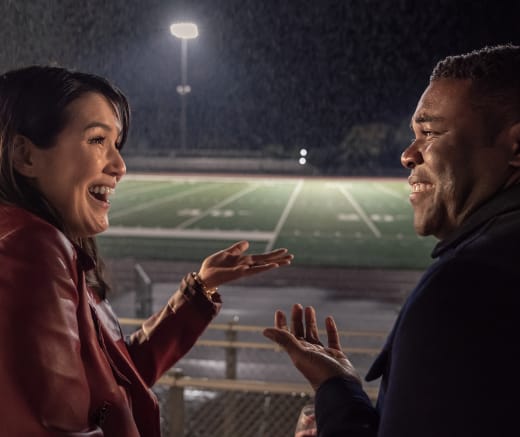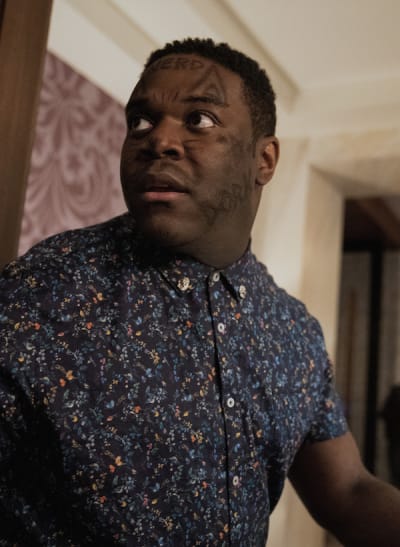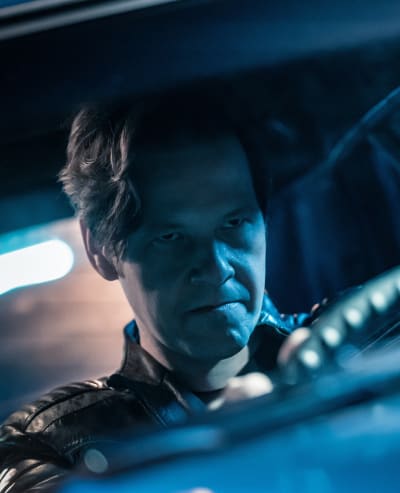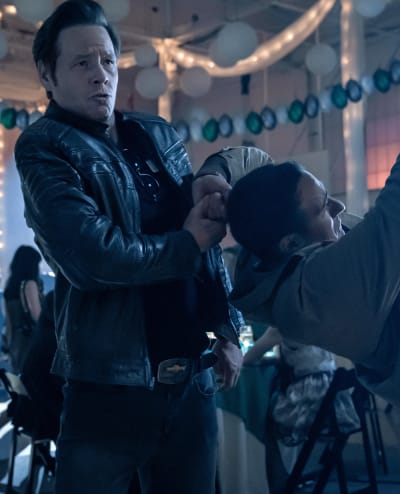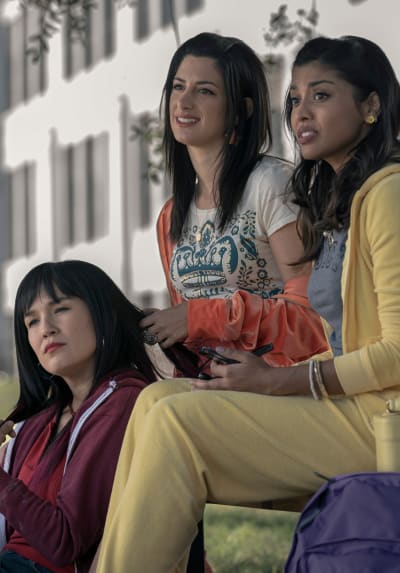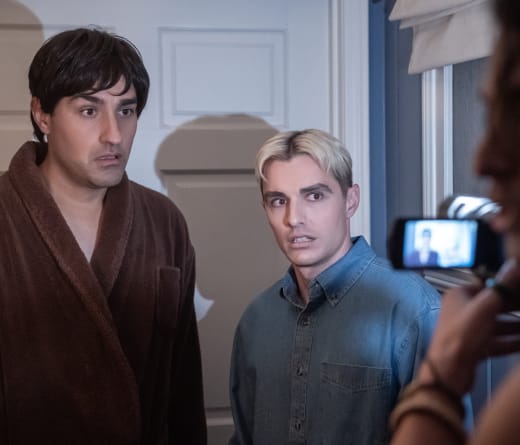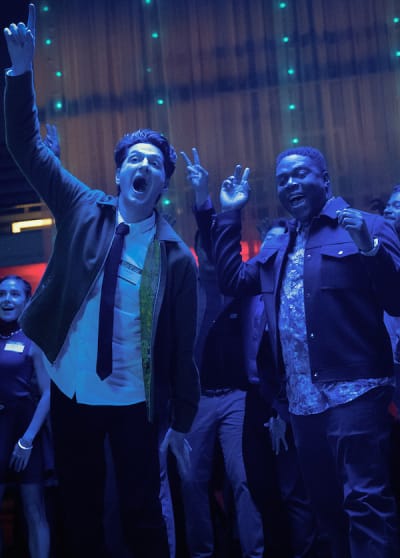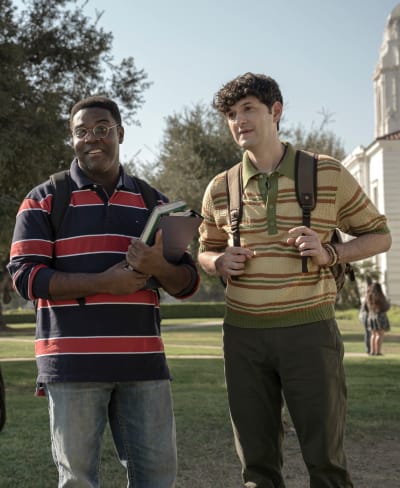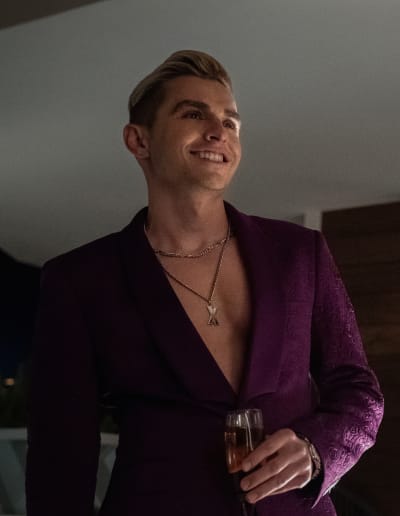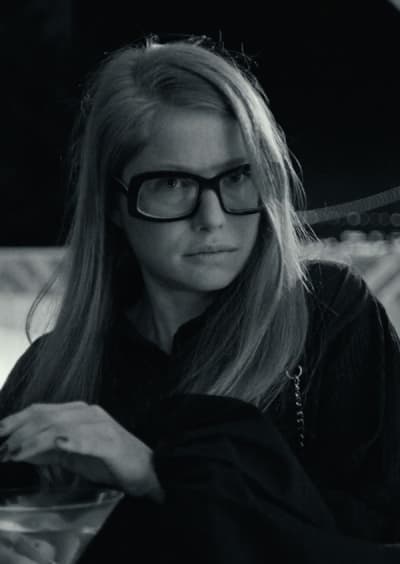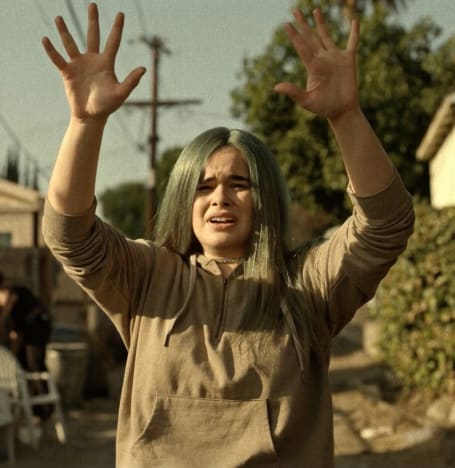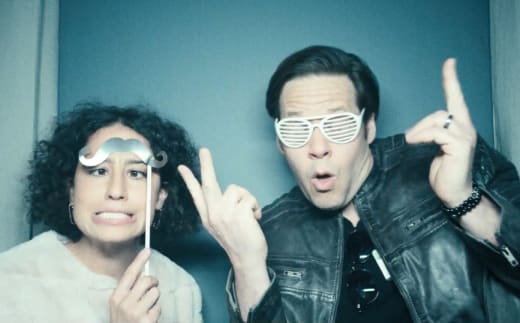Carl Herse is as busy as cinematographers get! With shows like The Last Man on Earth and Barry under his belt, Herse is the man behind the camera of Apple TV+’s breakout comedy sensation, The Afterparty.
We caught up with Herse to delve into how he created the spectrum of different looks in this genre-defying murder mystery series.
Read on for the conversation here!
Mary Littlejohn: It seems like you’re pretty busy these days. What are you working on right now?
Carl Herse: I just finished shooting the third season of Barry for HBO with Bill Hader. That’s been a very long ongoing project. We started prepping it before COVID happened, and then we shut down.
We finally came back this past fall and just did two weeks of reshoots. I’ve got to color-correct this week, and it’s going to air in April (April 24th). That’s not too far away.
How exciting! Barry is such a great show.
Let’s talk about The Afterparty. As a viewer, it’s been so enjoyable to have some high-quality comedy in these times. Even though it’s got the dark murder mystery part of it, it’s still light and fun. Each episode is so different. Which was your favorite episode to film?
We shot the whole thing out of order, all at once. So on any given day, you’re shooting an action movie, a thriller, a musical. My personal favorite is probably the thriller (The Afterparty Season 1 Episode 4), Ilana Glazer’s episode because it’s a little more subtractive.
What you’re doing is not additive in how you do a romantic comedy, with strong lighting looks and backlights, working with everything to create this aspirational environment. In the Chelsea episode, you’re just stripping things away.
In the action movie and the musical, you’ve got more camera movements, more dynamic elements. The thriller is more about reduction, making it mysterious, and being expressive with things like rain, darkness, and shadow. It’s really about limiting yourself.
You work a lot in comedy. Do you find that this was challenging then, and did you enjoy getting to do something different?
I feel like I’ve been lucky with the comedy I’ve worked on. We don’t approach the cinematography like a comedy. A lot of the stuff I do tries to tell a serious story and then mix in comedy elements, little eccentricities.
With the thriller episode of The Afterparty, I was able to play darker and moodier than I had in the past, which was challenging and exciting.
Are there any genres that The Afterparty didn’t cover that you would have liked to try?
I think the genre that I would like to do at some point would be a Western film. I don’t know how you work that into The Afterparty in its current version, but I’m sure that if I challenged Chris [Miller] and Phil[ip Lord] to the task, they would find a way to work that in!
What films or directors influenced each episode? For instance, “Chelsea” felt very Fincher-esque. Was there a particular film you were trying to emulate for each one, for their overall look?
In early conversations with Chris, we isolated movies and made lists. Looking at romantic comedies, we would list every Hugh Grant movie ever made and then pick one to latch onto.
For the action genre, you can go in a gritty Die Hard direction, a ridiculous Fast and Furious direction, or more of a John Wick style.
With the musical, we looked at La La Land, modern music videos, hip-hop videos, 8 Mile — whatever we could think of that had a musical element.
Once we had a list of references, we would start finding their similarities — filtration, lenses, camera movement, styles evocative of each genre. We made this big nerdy spreadsheet with notes.
For example, rom-com has longer lenses, the camera will do more aspirational crane moves, and have warm color situations with everyone lit cosmetically.
In the action genre, the camera is crazy and moving through space with cooler and more electric vibes, and we tried to channel John Wick by adding lots of neon and colored lights in the background that flared the lens.
Fincher was the reference for the thriller — that dark, brooding tone.
Did you ever use film, or was it all digital? How much of what you achieved was done practically on the set, and how much was post-production?
It’s primarily done in-camera. We didn’t shoot film, but we did a lot of film emulations. The big thing we had to do was lay out the timelines.
We had the present timeline, with the interviews and everything happening in the present tense, which also had to have its own strong look. We wanted that to have that Knives Out-style, the “locked-room mystery” genre as it’s called.
For the different ways of achieving our flashback looks, we would carry four different lens sets to rotate, different filtration, and shooting with different aspects ratios.
Then, from a lighting standpoint, it’s all so different. On a day of filming, and again we’re shooting everything all at once, my gaffer and I would have to light sets so that you were in a romantic comedy, and then with the push of a button and a few minutes of tweaks, you were in a John Wick movie.
It was essential in pre-production to build all our looks into the set, the moment you’re rigging the stages, to plan it out. In the moment, you rarely have much time, so it’s really about jumping between looks.
I think that was probably most jarring for the cast because they’d be sitting in a warmly lit room, and then all of a sudden, they’re in a David Fincher movie.
Our job was to support them when they had to transition from something broad and bright and funny to something dark and mysterious and gritty, or jubilant like a musical sequence.
Every light we brought to the set had to do many different things and achieve different colors, qualities, and movements. Then we would switch between a dolly, handheld, Steadicam, or on a crane, and briefing the camera operators and everyone on set with, “This is what we’re doing right now. This is the intention.”
We would share some of our references, for instance, The Lighthouse, doing a black-and-white art-house film, where everything has a single vanishing point and weird framing, and the performances have to be a certain way.
That sounds like a lot to cover in such a short time!
It’s the nature of filming where you only have specific locations for a few days. We were only in that gym for about a week, but it was a fun challenge. It was hard but always so exciting.
Lots of times with television, you start with your pilot, and then you’re just trying to maintain a look for the length of the show. The Afterparty was so different!
Chris Miller had such a strong vision — he’s been working on this for probably about ten years. If I confused myself, he could always give me a point of reference.
What was it like working with Miller and Lord? How much free reign did you get with them?
When I first heard about the project, I perked up instantly. I heard about it through the production designer. The next thing I knew, I was emailing Chris saying, “Hey buddy, what’s up, do you have a cameraman?” and that worked out pretty well!
They are incredibly smart. They have a very strong idea of what they want to do, but they’re also very collaborative. Chris has the most optimistic energy of anyone I’ve ever worked with.
If I came to him with ideas, he would just get excited. For the “High School” episode (The Afterparty Season 1 Episode 5), we started looking at movies like Can’t Hardly Wait and Y2K-era shows.
However, based on casting and where the high school reunion was at, we realized it needed to be more like the mid-2000s, so we had to shift it a bit and examine what the teen party movie looked like at that point.
The thing that I kept coming across was that found-footage craze, a Project X-type of film. Early in prep, I pitched the idea of adding a found-footage element.
That really excited Chris, so they wrote in the character who’s always carrying a little video camera around and then used that to help tell the story as a nod to that era and mix up the visual language further.
Eventually, you start running out of tools, and you have to reach deeper into the toolbox to figure out how you’re going to tell this story in a way that hasn’t been done in the first four episodes to keep it new and interesting.
What I loved about that episode, in particular, is that it’s technically Walt’s story, but because you’ve got so many plotlines, the found-footage element was a clever way to cover all the bases and fill in the story gaps when Walt couldn’t be in the scene.
Those guys know how to tell a fun story. It’s very refreshing how much joy they have in the filmmaking process.
Do you have any fun behind-the-scenes stories from The Afterparty you can share?
It’s funny because we made the show during the worst part of COVID, like January 2021. There were a lot of COVID protocols in place that limited the amount of irreverence that could take place on set.
We were working in a time where you’re getting tested constantly. Everyone was wearing masks and face shields, and there was a frustrating amount of separation with your colleagues around you.
A little fun thing was in the musical episode — multiple times, you’d see Ben Schwartz being thrown a microphone from off-camera. Chris Miller was always the one throwing the microphone. He has a pretty good arm. [laughs]
What’s your biggest takeaway working on The Afterparty?
When you’re working on a film or TV show, you’re in a vacuum where anything is possible. I think a lot of times, it’s easy to go with what you’ve done in the past because you know it will work, and it’s quick, and you can just shoot and please the producers.
But, in this version, we really had to be aware of all the possibilities and figure that out ahead of time — and also, on the day, be inspired to make choices that stay within the language of the story we were telling.
I think the big takeaway is that the tools you have in filmmaking are pretty limitless, and the ingredients you can put into something are pretty broad.
Did you always want to be a cinematographer? How did you get started?
It’s a classic story of a nerdy kid with his dad’s video camera. I grew up in the 80s-90s, with not a lot going on in the Midwest. My favorite thing to do was go to the video store, go through the aisles, scare myself in the horror section, and then run over to the comedy section.
From a very early age, I was obsessed with films and stories and did a lot of drawing what I later recognized were storyboards, telling a story in a few panels.
That turned into me with a video camera, telling goofy stories with my brother in the yard, taping a firecracker to his chest for a squib effect — thankfully, no one was injured!
When I was a kid, my mom signed me up for this class at our local public access channel, where people could learn about TV production. I joined it as a kid, not realizing that it would be a far older group of people.
So it was a bunch of (seemingly) adults and ten-year-old me, but I got to write and direct a little thing for my local public access station. That was the first time that I really understood that there was a wide spectrum of people out there doing this as a profession.
I grew up watching Star Wars movies and probably some James Cameron movies I shouldn’t have been watching at a certain age, and then finding the makings of those films and seeing crews working.
I became fascinated by that process, and so by high school, that was my full-time hobby.
I started a little film club, and I met a teacher at my school who was a documentary filmmaker, who helped me understand that filmmaking was more than entertainment – it was an art form.
I was introduced to Kubrick and Altman and 1970s cinema — things I didn’t know anything about — which gave me a foundation. When I decided to go to film school, I thought that directing was the move.
When I tried directing some plays at my school, I quickly realized that I did not really know how to talk to actors and that maybe I should be assisting the director in whatever way I could.
I studied cinematography in Chicago, started shooting little short films and building a reel, and eventually did the life on a couch in LA for a bit.
Do you ever find that when you watch a show or movie, you think more about the process behind it as you’re watching, like how you could achieve this or wondering why certain choices were made?
My impression of a good film is one that draws me in enough with the story that I don’t think about that too much. With any good filmmaking, you don’t want to be thinking too much about it.
Recently, watching Licorice Pizza, I noticed that Paul Thomas Anderson has reduced the flashiness of his style as his career has progressed.
Like with [The Afterparty’s] thriller episode, being able to limit one’s self and reduce what you’re doing is a sign of maturity as a filmmaker.
To that point, what are some other films or television shows that you’ve seen recently that you enjoyed or that excited you as a filmmaker?
It was inspiring for me, especially coming out of COVID, to see that we had a Wes Anderson movie, a P.T. Anderson movie, a Coen movie, all in theatres at once. I felt that same excitement I had as a high school film nerd.
What I’m really enjoying right now is PEN15. It’s a show that does a great job of not drawing too much attention to how it’s made, and you just get pulled into who these characters are, and it’s easy to relate to their woes.
Is there any advice you’d like to impart on aspiring future cinematographers?
Chris and Phil are great at surrounding themselves with good people, which I try to do as well.
If you can get everyone — your camera team, your lighting department — excited about what you’re doing, it helps you and everybody else because you all achieve it together.
My advice would be to find people that are smarter than you to help you succeed and be very nice to them.
Don’t miss the final episode of The Afterparty, streaming on Apple TV+ on Friday, March 4th, 2022.
This interview has been edited for length/clarity.
Mary Littlejohn is a staff writer for TV Fanatic. Follow her on Twitter.
